Garment Fabric

How to care for and maintain your sports fashion garments ?
Sporting fashion garments are designed to be both stylish and functional, but they also require special care to maintain their quality and appearance. Here are some tips on how to properly care for and maintain your sports fashion garments: Washing instructions include reading the label, sorting clothes, using a gentle detergent, hand washing or machine washing on delicate cycle, and avoiding tumble drying. Maintenance tips include storing properly, avoiding ironing, spot cleaning stains, rotating garments, and repairing tears and holes. By following these care and maintenance tips, you can extend the lifespan of your sports fashion garments and keep them looking their best for years to come.

What is the most effective method for removing wine stains from fabric ?
The most effective method for removing wine stains from fabric involves acting quickly, blotting the stain, applying salt and a stain remover, rinsing with cold water, washing the fabric, and checking the stain before drying.
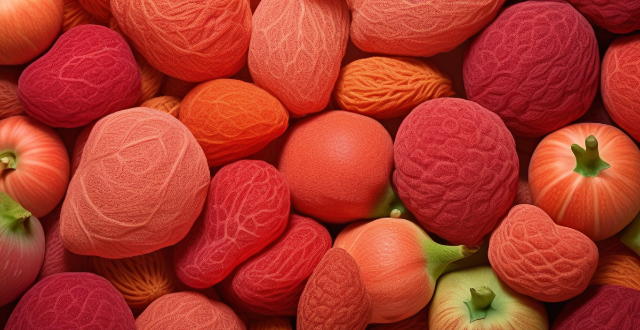
How do anti-bacterial fabrics contribute to sportswear innovation ?
Anti-bacterial fabrics contribute to sportswear innovation by improving hygiene, enhancing durability, improving performance, and offering customization options. They reduce the growth of bacteria in garments, keeping them fresher for longer periods, extending their lifespan, and providing a comfortable and dry environment during physical activities. Manufacturers can choose from various antimicrobial agents and treatments to create unique garments that cater to specific needs.

Is it possible to remove rust stains from fabric without damaging it ?
Rust stains can be removed from fabric using natural ingredients such as lemon juice and salt, vinegar and baking soda, or hydrogen peroxide. These methods are effective in breaking down the rust and lifting it away from the fabric without causing damage. It is important to test any cleaning solution on a small area of the fabric before applying it to the stain and to allow enough time for each method to work. If one method does not work, try another one until the stain is completely removed. After removing the rust stain, wash the fabric according to its care instructions to remove any residual cleaning solution and prevent further damage.

How do UV-protective fabrics influence the design of outdoor sportswear ?
The integration of UV-protective fabrics in the design of outdoor sportswear has significantly influenced its functionality and safety. Material selection, garment construction, aesthetics, and durability are key considerations in this process. Designers ensure that these garments offer protection from harmful UV rays while also being comfortable, durable, and visually appealing.

How do smart fabrics work in sports clothing ?
Smart fabrics in sports clothing incorporate conductive threads and sensors to monitor movements, vital signs, and environmental factors. They provide real-time feedback for performance enhancement and injury prevention. Features like thermoregulation and self-cleaning improve comfort and durability. Integration with devices allows for a seamless user experience, while customization options offer personalized fits and designs.

What's the best way to treat set-in stains on white clothing ?
Set-in stains on white clothing can be stubborn and difficult to remove, but with the right approach, they can often be successfully treated. Here are some steps to follow: 1. Identify the Stain: First, identify the type of stain you are dealing with. Different stains require different treatments. For example, protein stains like blood or grass require a different approach than tannin stains like tea or coffee. 2. Act Quickly: The sooner you treat a stain, the easier it is to remove. If the stain is still wet, blot it with a clean cloth or paper towel to remove as much of the substance as possible. 3. Pre-Treat the Stain: Before washing, pre-treat the stain with a suitable stain remover. Choose a product that is safe for use on white clothing and apply it directly to the stain following the instructions on the label. Let it sit for the recommended time. 4. Wash in Hot Water: Wash the garment in hot water, using a detergent that is designed for white clothing. Check the care label on your garment to ensure that it can be washed in hot water. If not, use the warmest water recommended. 5. Use Chlorine Bleach if Necessary: If the stain persists after washing, you can use chlorine bleach. However, be sure to check the care label on your garment first. Some fabrics may not be able to handle bleach. If your garment is made of a material that can be safely bleached, add chlorine bleach to the wash cycle according to the package instructions. 6. Rinse Thoroughly: Rinse the garment thoroughly to remove all traces of the stain and any cleaning products used. 7. Dry and Check: Dry the garment and check to see if the stain has been removed. If not, repeat the process before drying again. Once the stain is gone, you can dry the garment as usual. In conclusion, treating set-in stains on white clothing requires patience and persistence. By identifying the stain, acting quickly, pre-treating, washing in hot water, using chlorine bleach if necessary, rinsing thoroughly, drying, and checking, you can often successfully remove even the most stubborn stains.
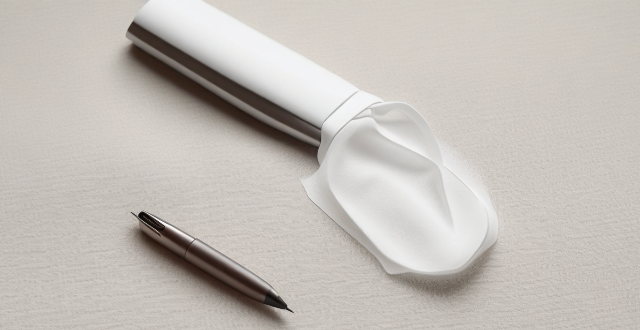
How do I remove ink or pen marks from my clothing ?
Removing ink or pen marks from clothing can be challenging, but with the right techniques, it's often possible. Identify the type of ink, act quickly to blot wet ink, pre-treat the stain using appropriate methods for water-based, oil-based, or permanent marker ink, machine wash following care label instructions, check the stain before drying, and dry according to care label instructions. Always test cleaning solutions on an inconspicuous area first and consider professional cleaners for delicate or valuable garments. Patience and persistence are key when dealing with stubborn stains.

Can vinegar be used as a natural stain remover for clothes ?
Vinegar can be used as a natural stain remover for clothes due to its acidic properties and antimicrobial benefits. It is effective in removing various types of stains, including grass, blood, wine, coffee, tea, and sweat. To use vinegar as a stain remover, apply it directly to the stain, let it sit for 5-10 minutes, scrub gently, rinse with cold water, and wash according to care label instructions. Vinegar is cost-effective, environmentally friendly, and versatile. However, it should be tested on an inconspicuous area before use and avoided on delicate fabrics.

Can protective clothing be reused after being exposed to chemicals or biological agents ?
The reusability of protective clothing after exposure to chemicals or biological agents is determined by factors such as the type of garment, nature of contaminants, and level of exposure. Potential risks include inadequate decontamination, material degradation, and cross-contamination. Best practices for handling and disposal involve immediate removal, proper storage, appropriate decontamination processes, and safe disposal methods like incineration or landfill disposal according to local regulations. Adherence to these practices is crucial for maintaining safety and preventing further contamination.

What are some quick and easy ways to get my clothes clean ?
Here are some quick and easy ways to keep your wardrobe fresh and clean: 1. Spot Cleaning: For small stains or spills, dampen a cloth with water or a mild detergent and gently blot the affected area until the stain is removed. 2. Hand Washing: Fill a sink or basin with warm water and add a small amount of gentle detergent. Gently agitate clothing items in the water, then rinse thoroughly and hang to dry. 3. Machine Washing: Sort clothes by color and fabric type before washing. Use a gentle cycle and cold water for delicate items, and warmer water for more durable fabrics. 4. Dry Cleaning: Check care labels on garments made from silk, wool, or other delicate materials. If dry cleaning is recommended, take clothes to a professional dry cleaner. 5. Air Drying: Hang clothes outside on a clothesline or indoors on a drying rack to save energy and prolong their lifespan. This method also helps eliminate wrinkles and static cling. 6. Steaming: Hang clothes in a steamy bathroom after a shower or use a handheld garment steamer to remove wrinkles and odors. By incorporating these methods into your routine, you can keep your wardrobe looking its best without spending hours on laundry day.

What are the best ways to wash clothes quickly and effectively ?
This article discusses the best ways to wash clothes quickly and effectively. It covers preparation steps such as sorting clothes, pre-treating stains, and checking pockets. It also explains how to set up a washing machine with the right cycle, warm water, and detergent. Handwashing clothes is another option that involves soaking clothes in warm water with detergent, scrubbing gently, rinsing thoroughly, and hanging to dry. After washing, drying clothes properly is important to prevent wrinkles and damage. Overall, following these steps can help you save time and keep your clothes clean and fresh.
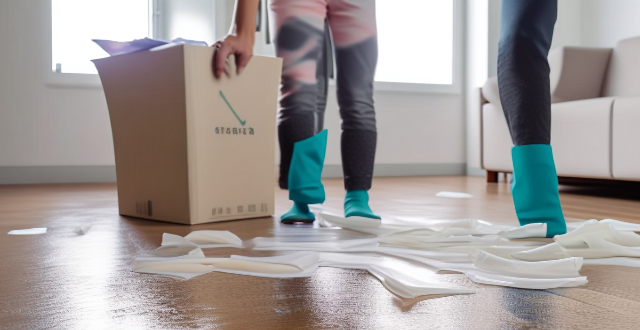
Are there any smart strategies for packing clothing to avoid wrinkles ?
Smart strategies for packing clothing to avoid wrinkles include rolling instead of folding, using tissue paper or dry cleaner's plastic to layer between items, packing heaviest items on bottom, utilizing every bit of space, hanging what you can, choosing wrinkle-resistant fabrics, and handling delicates with care. These tactics help minimize wrinkles in packed clothes, keeping your wardrobe looking crisp and fresh throughout your journey.

What are some creative ways to upcycle old clothing ?
Upcycling old clothing is a creative and sustainable way to reduce waste and give new life to your favorite outfits. In this article, we will explore some innovative ideas for upcycling old clothes that can help you save money, reduce your environmental impact, and express your unique style. One of the most common ways to upcycle old clothes is by repurposing them into new outfits. Another way to upcycle old clothes is by altering them for different occasions. If you're looking for more unconventional ways to upcycle old clothes, consider these ideas: make a tote bag, create home decor items, make pet accessories, or craft DIY beauty products. By getting creative with upcycling old clothes, you can not only save money but also contribute to a more sustainable lifestyle.
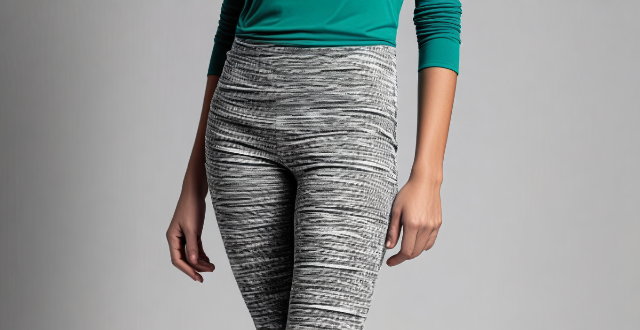
What fabrics are best for sports fashion clothing ?
The best fabrics for sports fashion clothing include nylon, polyester, spandex, cotton, rayon, and bamboo. Nylon is strong and stretchy, while polyester is durable with moisture-wicking properties. Spandex adds elasticity to garments, while cotton is soft and breathable. Rayon mimics the feel of silk or wool, and bamboo is eco-friendly with antimicrobial properties. These fabrics provide comfort, breathability, and durability for activewear that performs well during intense workouts.

How does protective clothing work to prevent exposure to hazardous materials ?
Protective clothing shields wearers from hazardous materials through barrier materials, sealed enclosures, breathability features, and disposability. Its effectiveness depends on proper training, fit, maintenance, and responsible disposal practices.

What role does technology play in shaping sports-inspired fashion ?
Technology has significantly impacted sports-inspired fashion through fabric innovations, digital marketing, and customization options. Advanced fabrics like nanotechnology, smart fabrics, and sustainable materials enhance performance and style. Social media platforms and virtual/augmented reality technologies boost brand promotion and customer engagement. Customization features allow for unique designs, while 3D printing opens up personalized sportswear possibilities.
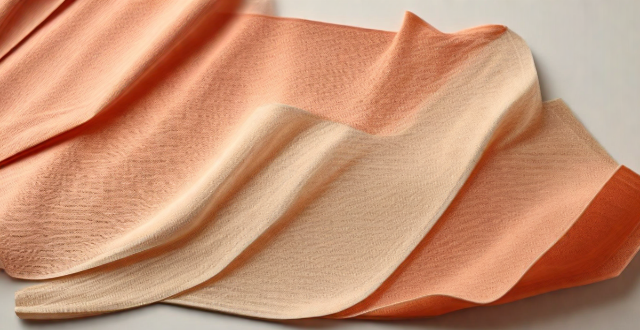
How do smart fabrics and materials enhance sportswear ?
Smart fabrics and materials are revolutionizing sportswear by offering enhanced performance, comfort, and functionality. They provide moisture-wicking ability, breathability, stretchability, durability, and antimicrobial properties. These features help athletes stay dry, comfortable, flexible, durable, and hygienic during intense workouts or competitions. Overall, smart fabrics and materials play a crucial role in enhancing sportswear, providing athletes with improved comfort, performance, and functionality.

How has technology influenced the design of sports fashion ?
Technology has significantly influenced sports fashion design, introducing advanced materials, digital printing techniques, smart wearables, and increased customization options. These innovations have enhanced the functionality, comfort, and style of sports apparel, catering to individual preferences and needs.

Is there a natural way to clean stains off my clothes ?
Removing stains from clothes can be challenging, but natural methods like using white vinegar, baking soda, lemon juice, hydrogen peroxide, and salt can effectively clean various types of stains. These techniques are gentle on the environment and clothing.

What is the role of nanotechnology in designing sports apparel ?
Nanotechnology has revolutionized sports apparel design by improving performance, comfort, durability, and enabling the development of smart garments. Nanofibers and nanoparticles enhance fabric strength, flexibility, and moisture-wicking capabilities, while lightweight and breathable fabrics increase comfort. Smart garments with sensors monitor vital signs in real-time for optimized training.

How do moisture-wicking fabrics enhance sports clothing ?
Moisture-wicking fabrics significantly enhance sports clothing by improving comfort, performance, and durability. They pull sweat away from the body, reducing stickiness and helping maintain a stable body temperature. These fabrics are lightweight, breathable, and quick-drying, which enhances physical activity. Their resistance to shrinkage and stretching ensures longevity. Moisture-wicking fabrics work through capillary action and efficient evaporation, speeding up the drying process. They are widely used in base layers, athletic wear, and accessories like headbands and socks, providing comfort during extended activities. Overall, these fabrics are crucial for modern sports apparel, offering practical benefits for athletes and fitness enthusiasts.

Which industries commonly use combination motor drives ?
Combination motor drives, or variable frequency drivesCombination motor drives, or variable frequency drives are electronic devices that control the or variable frequency drives (VFDs), are electronic devices that control the speed of AC electric motors. They are widely used in various industries for energy saving, control precision, and process optimization. Some sectors where combination motor drives are commonly employed include manufacturing and production industries, such as food and beverage processing, pharmaceuticals, automotive manufacturing, paper and pulp, energy and utilities, transportation and logistics, HVAC and refrigeration, textile and garment industry, pumps and compressed air systems. The adaptability and efficiency benefits of combination motor drives make them an integral part of modern industrial processes.

What are some common applications for AC stepping motors ?
AC stepping motors have a wide range of applications due to their precise control and high torque output. Here are some common uses: 1. Printers and Plotters: AC stepping motors are used in printers and plotters to move the print head or pen with precision, and they can control the speed of the print head or pen, allowing for variable printing speeds. 2. CNC Machines: In computer numerical control (CNC) machines, AC stepping motors are used to control the path of the cutting tool and adjust the feed rate of the tool, allowing for precise machining of parts. 3. Robotics: AC stepping motors are often used in robotic joints to provide precise movement and positioning, and they can control the force applied by the robot's end effector, allowing for delicate manipulation of objects. 4. Textile Industry: In textile machinery, AC stepping motors are used to feed fabric through the machine at a controlled rate and control the pattern being woven into the fabric by adjusting the position of the weaving elements. 5. Automation Systems: AC stepping motors are used to control the speed and direction of conveyor belts in automation systems, and they are often used as actuators in automated systems, providing precise control over the position and movement of components.

What are some efficient laundry techniques for busy people ?
Laundry can be a time-consuming task, but there are efficient techniques that can help busy individuals save time. Sorting laundry ahead of time, using a laundry app, investing in a quality washing machine, pre-treating stains, using the right detergent and fabric softener, folding and putting away immediately, and considering hiring a laundry service are all effective strategies. By implementing these tips, busy people can make laundry day a breeze.
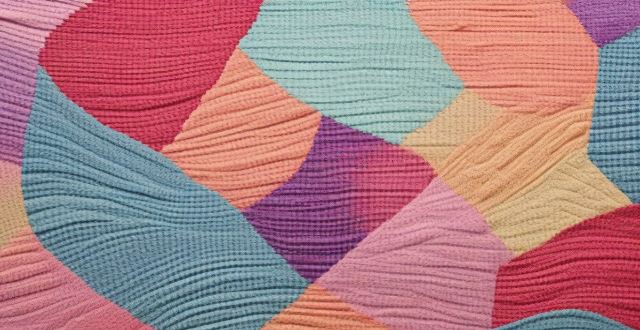
How do you combine style with comfort in your activewear ?
Combining style with comfort in activewear is possible by following these tips, including choosing the right fabric, investing in quality pieces, mixing and matching colors and patterns, accessorizing wisely, considering layering, and selecting appropriate footwear.

How can I streamline my laundry process to be more productive ?
Streamlining your laundry process can save time and reduce stress. Here are some tips to help you be more productive with your laundry tasks: 1. **Preparation Phase**: - Gather all necessary laundry supplies like detergent, fabric softener, and stain removers. - Sort clothes by color and fabric type. - Establish a routine for doing laundry and use proper storage for dirty and clean clothes. 2. **Washing Cycle**: - Avoid overloading the washing machine and separate heavy items from delicates. - Choose the appropriate wash cycle based on soil levels and adjust water temperature for energy efficiency. 3. **Drying Process**: - Dry similar items together and clean the lint screen after every use to improve dryer efficiency. - Use timed drying to avoid overdrying and fold clothes immediately to prevent wrinkles. 4. **Organization and Maintenance**: - Fold or hang clothes immediately after drying to reduce wrinkling and put away clean clothes to avoid clutter. - Keep the laundry area clean by wiping down surfaces after each use and regularly cleaning the washing and drying machines. By implementing these steps, you can make your laundry process more efficient, saving time and effort in the long run.
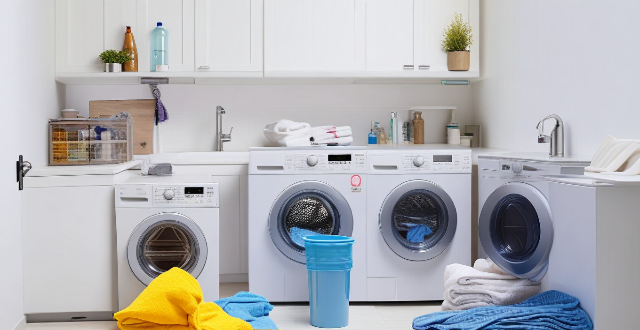
How do I maximize my laundry routine for efficiency ?
Maximizing Laundry Routine for Efficiency is a guide that provides tips and tricks on how to make the most out of your laundry routine. The guide covers various aspects of laundry, including preparation, washing, drying, folding and storing, and maintenance. It emphasizes the importance of separating clothes by color and fabric type, using the right detergent and amount, choosing the appropriate wash cycle and water temperature, not overloading the washing machine, using the right dryer setting, removing clothes promptly after drying, folding clothes neatly, storing clothes appropriately, cleaning the washing machine regularly, and maintaining the dryer properly. By following these tips, you can save time, energy, and money while keeping your clothes looking their best.
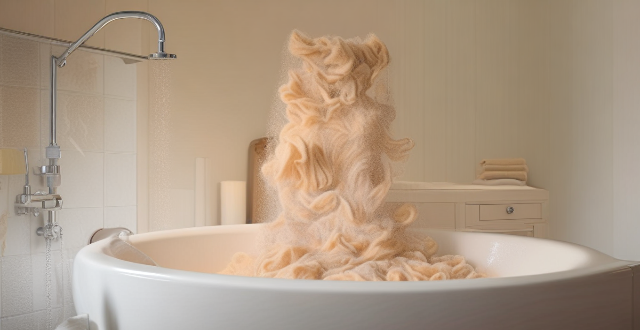
What are the best ways to remove stains from clothes ?
Removing stains from clothes requires pre-treatment, stain removers, home remedies, laundry detergent, and sometimes professional dry cleaning. Pre-treating the stain by blotting it with a clean cloth or paper towel is crucial. Commercial stain removers can be effective for various stains, while home remedies like baking soda and vinegar, hydrogen peroxide, and lemon juice can tackle stubborn stains. Applying laundry detergent directly to the stain and washing it afterward can also work. For delicate fabrics or persistent stains, professional dry cleaning may be necessary. By following these steps, most types of stains can be effectively removed from clothing.